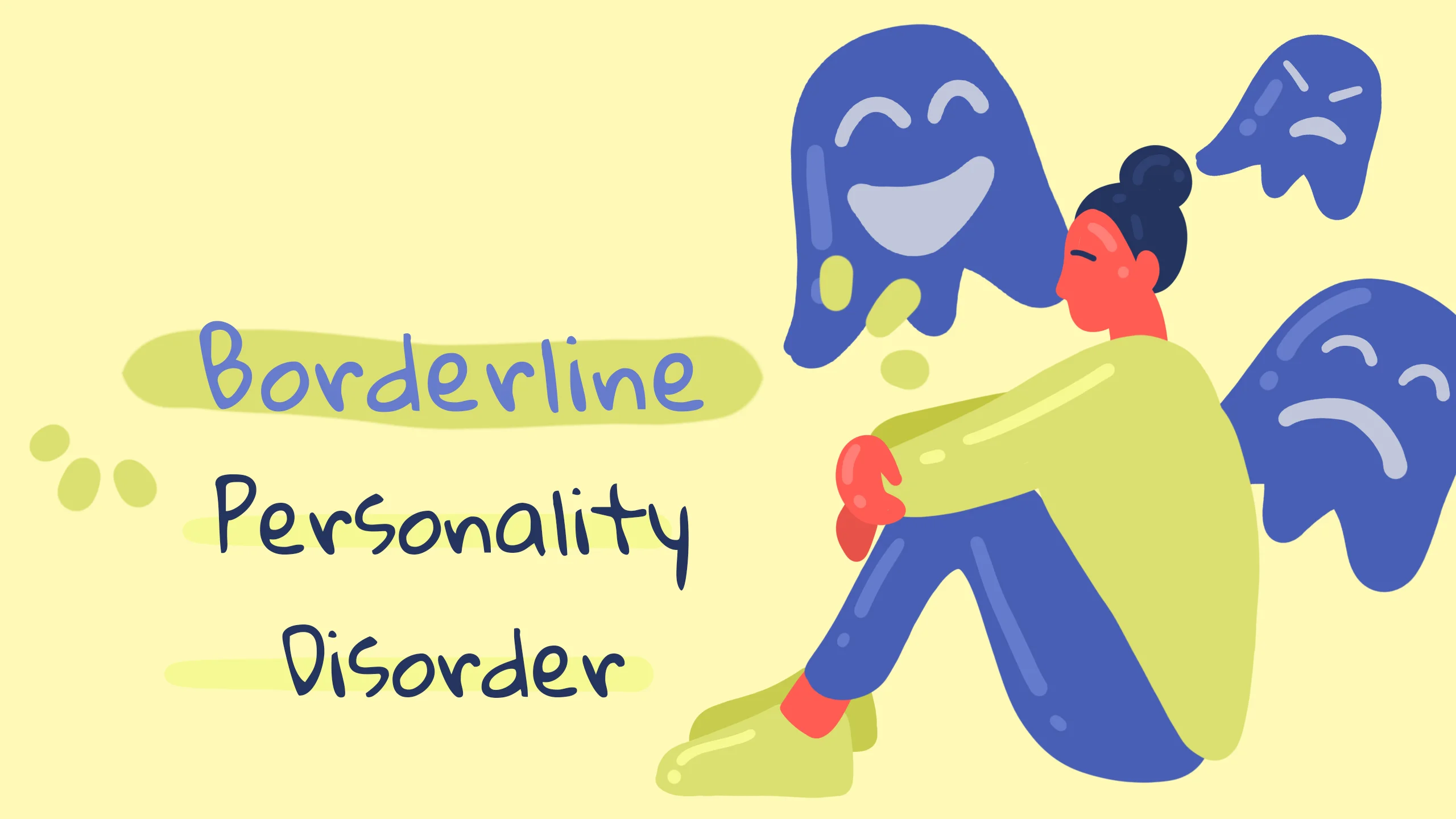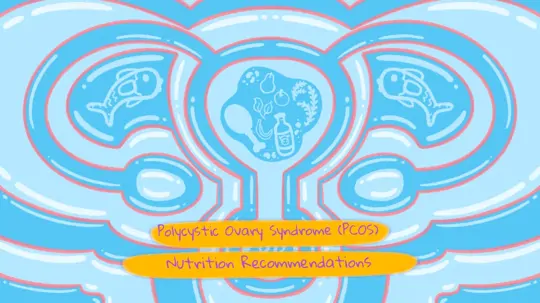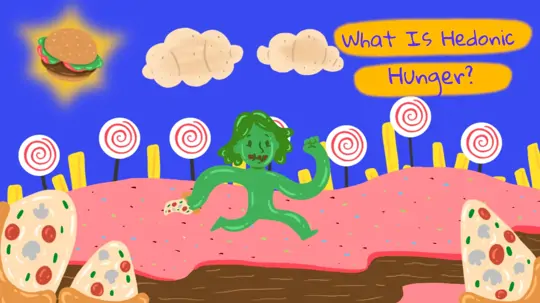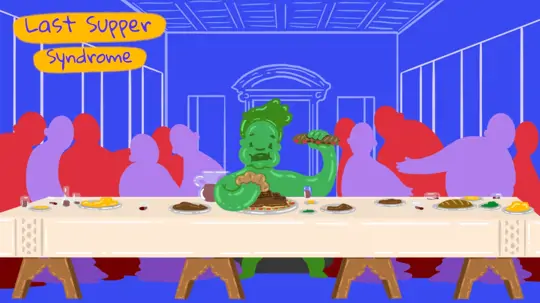
Start feeling better today!
Connect with your therapist today and take control of your life like our 850.000 happy clients.
Get StartedWhat is Borderline Personality Disorder?
Borderline Personality Disorder is a serious psychiatric disorder characterized by impulsive behaviors, chronic feelings of emptiness, and hyperactivity caused by an individual's inability to regulate their emotions.
Borderline individuals, also known as those suffering from Borderline Personality Disorder, frequently struggle in their relationships. With these symptoms, borderline personality emerges as a personality pattern that increasingly affects the individual's functionality.
People's basic characteristics and personality traits, coping styles, and interactions with the social environment begin to develop in childhood and become apparent in late adolescence or early adulthood, depending on the effect of learning and disposition.
The characteristics of the person at these ages form the personality of the individual, that is, the characteristics and behaviors that distinguish them from others1.
When the personality traits that develop and settle during this period are so rigid and counterproductive that they prevent adaptation to society, make other people's lives difficult, and cause problems in many areas of life most of the time, we can talk about personality disorders.
Symptoms of Borderline Personality Disorder
Borderline Personality Disorder is classified as a cluster B personality disorder. Cluster B personality disorders include histrionic, narcissistic, antisocial, and borderline personality disorders. These personality disorders are grouped together because they all exhibit dramatic, emotional, and unstable behavior.
How do people with borderline personality disorder act? The following are the most noticeable characteristics of this mental health problem, also known as borderline personality:
- They exhibit impulsive and inconsistent behaviors in interpersonal relationships.
- They over-idealize their friends, romantic partners, or family members.
- As a result of over-idealization, they experience extreme frustration and outbursts of anger.
- They may try to prevent the abandonment that they have imagined because they have intense fear and anxiety about abandonment3.
- As in interpersonal relationships, they can be impulsive and inconsistent in their self-image, that is, their self-evaluation and beliefs about their own personality2.
- They can react quickly to stimuli without thinking about the long-term consequences; in other words, they are impulsive.
- Obviously, they may engage in self-harm or attempt suicide in order to manipulate the people around them.
- They feel chronically empty.
- They have transient and stress-related paranoid or overly suspicious thoughts1.
- They may experience temporary and stress-related disconnection from reality (dissociation)1.
What Are the Causes of Borderline Personality Disorder?
According to research, certain risk factors increase the likelihood of developing Borderline Personality Disorder. Accordingly, certain genetic, environmental, and social factors may increase the risk of BPD.
Family History
Individuals with close family members with Borderline Personality Disorder, such as parents or siblings, are at a higher risk than others. People who have a family history of borderline or related personality disorders have a higher genetic proclivity.
Brain Structure and Functioning
According to research, people with Borderline Personality Disorder have some functional and structural changes in their parts of the brain, particularly those related to impulses and emotion management.
When we examine these people's brain images, we can see that regions such as the amygdala, which aids in coping with negative emotions such as fear and anger, and the hippocampus, which aids in autocontrol, are smaller than expected or are activated abnormally. However, these changes may be the result of or cause a personality disorder.
Environmental, Cultural and Social Factors
Many people with BPD report having been exposed to traumatic experiences such as abuse, abandonment, and negative childhood experiences. Being neglected by one or both parents, growing up in a fearful or threatening environment, or living in the same home as another family member with a serious mental disorder are all common occurrences in the lives of people with Borderline Personality Disorder.
Although these factors may increase the likelihood of the emergence of a personality disorder, they do not guarantee that people with these conditions will develop Borderline Personality Disorder.
What Are the Consequences of Borderline Personality Disorder?
Borderline Personality Disorder affects an individual's thoughts, feelings, and behaviors, making it difficult for them to cope with the difficulties they face in various areas of life. We all have a unique perspective on the world, but people with BPD have a distorted view of themselves and their surroundings.
These people experience intense emotions that they struggle to control, and their lack of control can make them even more frustrated and overwhelmed. Without effective therapy or therapeutic support, these issues can have a wide-ranging impact on a person's life:
- Losing self-confidence
- Dropping out of school
- Having legal problems multiple times and being sued
- Getting fired or changing jobs repeatedly
- Alcoholism and substance abuse
- Having trouble establishing and maintaining healthy relationships
- Chronic self harm
- Relationships resulting in breakups or divorce
- Being hospitalized frequently
Problems in Romantic Relationships
The effects of Borderline Personality Disorder are unavoidably visible in one's romantic relationships. People suffering from Borderline Personality Disorder may have a strong fear of abandonment. Because of these fears, they can constantly spy on the person with whom they are in a relationship and interpret every behavior as abandonment.
Intense feelings of insecurity and fear can make compromise difficult and cause the relationship to fluctuate. While they are afraid of being abandoned, they may become overwhelmed and refuse to be near their partner. Finally, there may be an intense and conflicting relationship that swings between the demands of love and attention and withdrawal and isolation behaviors.
Furthermore, some symptoms of this disorder can have an indirect impact on relationships. Impulse purchases, for example, or an uncontrollable fight, can affect many members of the family.
Getting professional help is the best way to maintain a relationship with someone who has BPD and protect both parties' mental health while doing so. Couples therapy, in addition to individual therapy, can help maintain the relationship.
Psychological Support for Borderline Personality Disorder
Because personality disorders are chronic, widespread, and rigid in nature, it is possible to progress with psychotherapy by setting specific goals. These objectives may include reducing the individual's distress and changing the behaviors that cause dysfunction in daily life.
Individuals with Borderline Personality Disorder, on the other hand, can bring their impulsivity and emotional instability from their interpersonal relationships into the therapy setting. During therapy, they may become overly reactive and have emotional breakdowns1. In this case, they may struggle to achieve the necessary efficient results with the therapy.
Furthermore, as with all personality disorders, psychotherapy methods for Borderline Personality Disorder should be modified based on the behavior and symptoms of the person seeking psychological help, because some methods found in the traditional individual psychotherapy spectrum can worsen symptoms in Borderline Personality Disorder.
Dialectical Behavior Therapy
Dialectical Behavior Therapy has been developed specifically for Borderline Personality Disorder4. The term dialectic means the interaction of conflicting ideas. Within Dialectical Behavior Therapy, dialectic refers to the integration of both acceptance and change as requirements for healing5.
Dialectical behavior therapy aims to treat the symptoms of BPD by replacing maladaptive behaviors with healthier coping skills such as mindfulness, interpersonal effectiveness, emotion regulation, and distress tolerance6.
Schema Therapy
Personality disorders and other chronic psychological disorders are treated with schema therapy. CBT is an integrative form of psychotherapy that combines concepts and approaches from attachment theory, Gestalt therapy, and psychodynamic perspectives7.
It is based on two conceptual models for formulating problems and understanding the change process: early maladaptive schemas that develop in childhood and rapid emotional changes that occur when several different schemas are activated at the same time8.
Transference-Focused Therapy
Transference-focused psychotherapy is concerned with the analysis of transference that occurs between the client and the therapist during the therapeutic relationship. It aims to analyze how the individual's self and the people in the individual's life are represented in the individual's own self, in addition to the client's transfer to the therapist9.
This type of therapy works with individuals to help them develop the defense mechanisms they need to cope with problems in a healthy way as well as find a solution to identity diffusion10.
Mentalization-Based Therapy
Mentalization-based therapy is a type of psychotherapy that helps individuals identify their thoughts and feelings at any given time and develop an alternative perspective on the situation.
Mentalization-Based Therapy teaches that thinking should come before reaction in order to solve the problems that people with Borderline Personality Disorder face as a result of their impulsivity11.
Conclusion
Even though Borderline Personality Disorder is a lifelong psychological condition that has a negative impact on all aspects of life, particularly interpersonal relationships, due to impulsivity and unmanageable emotions and behaviors, it is possible to make life easier for yourself through psychotherapy, various behavioral changes, and more functional coping methods.
Sources
- Butcher, J.N., et al., 2013, Abnormal Psychology, Kaknüs Publications.
- Paglieri, F., 2012, Consciousness in Interaction: The Role of the Natural and Social Context in Shaping Consciousness, USA: John Benjamins Publishing Company.
- Livesley, W.J., 2003, Diagnostic Dilemmas in Classifying Personality Disorders, New York: Guilford.
- Barnicot, K., et al., 2018, Dialectical Behavior Therapy v. Mentalisation-based Therapy for Borderline Personality Disorder, Psychological Medicine.
- Linehan, M.M., 1993, Skills Training Manual for Treating Borderline Personality Disorder. New York: Guilford.
- Stoffers, J.M., et al., 2012, Psychological Therapies for People with Borderline Personality Disorder, Cochrane Database Syst Review.
- May Tan, Y., et al., 2018, Schema Therapy for Borderline Personality Disorder: A Qualitative Study of Patients' Perceptions, PLoS One.
- Young, J.E., 2003, Schema Therapy: A Practitioner's, New York: The Guilford Press.
- Stoffers, J.M., et al., 2012, Psychological Therapies for People with Borderline Personality Disorder, Cochrane Database of Systematic Review.
- Clarkin, J.F., 1999, Psychotherapy for Borderline Personality, New York.
- https://evrimagaci.org/borderline-kisilik-bozuklugu-nedir-belirtileri-nedir-nasil-teshis-edilir-nasil-tedavi-edilir-10682





